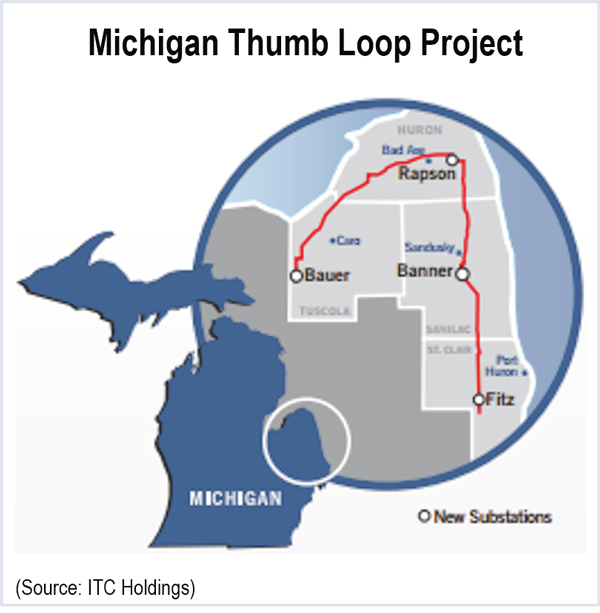By Rich Heidorn Jr.
When Exelon announced its acquisition of Pepco Holdings Inc. last year, it appeared its biggest regulatory obstacles would be in Maryland and D.C., where most of Pepco’s customers reside. With last week’s narrow win in Maryland, and Delaware regulators unofficially on board, only the District’s approval is needed to complete the deal.
Opponents of the deal attacked Exelon on a number of grounds, including its record on renewable and distributed energy and the fact that it would give the company an 80% market share of the state’s distribution customers.
Exelon worked on several tracks, negotiating settlements with some of those who initially opposed the deal while working to undermine the arguments of those who remained in its way.
The three members of the Maryland Public Service Commission who voted to approve the deal said they were satisfied that ratepayers would receive benefits and that its 46 conditions protected against any harm. They acknowledged, however, “No merger is without risks.”
Here’s a closer look at how Exelon overcame the opposition.
Winning over Opponents
Exelon made concessions to win over several opponents, including commitments to fund energy efficiency programs, renewable generation, microgrid projects and public recreational projects.

The commission said the settlements with the counties indicated “strong public support for the merger.” It did not mention that the Montgomery County Council split from County Executive Ike Leggett, unanimously approving a resolution opposing the deal.
It wasn’t enough to eliminate all critics. The Sierra Club, the Clean Chesapeake Coalition, the Mid-Atlantic Renewable Energy Coalition, the Maryland, District of Columbia and Virginia Solar Energy Industries Association and Public Citizen all continued their opposition. The commission rejected their criticism, along with objections from state Attorney General Brian Frosh, the Maryland Energy Administration and the Office of Peoples Counsel.
Dominance
As the parent of Baltimore Gas and Electric, Potomac Electric Power Co. (PEPCO) and Delmarva Power & Light, Exelon would provide electricity to more than 80% of Maryland’s electric distribution customers. While this was a source of worry to merger opponents, the commission majority said it viewed it as a positive.
“Having the three contiguous Maryland electric distribution utilities share common support functions among themselves and with Exelon’s other distribution utilities (PECO Energy in Pennsylvania and Commonwealth Edison in Illinois) presents a rare opportunity for Delmarva and PEPCO to leverage greater economies of scale, increase the potential for improved reliability performance with better cost control and benefit customers with synergy savings,” the commission said. “It also enables easier pooling of resources to restore service to customers more quickly following major storms, leading to greater resilience for our Maryland utilities. The sharing of ‘best practices’ among all six Exelon distribution companies will lead to day-to-day operational efficiencies and increased effectiveness, reducing operating expenses and ultimately rates for customers lower than they otherwise would have been.”
The commission noted that in D.C. and nine states, one investor-owned utility serves 100% of the customer base. Ten other states have utilities serving more than 80% of the customer base. “Yet there is no evidence in the record that either the D.C. Public Service Commission or the commissions of those other states have been less able to effectively regulate the reliable provision of electricity within their jurisdictions,” the majority said.
Loss of Voice
Opponents also said they feared the loss of Pepco’s “voice” as a wires-only company. (See Pepco to Lose its PJM Voice; Consumers Lose Frequent Ally.)
The commission concluded that the concern was “greatly overstated.”
“While we are cognizant of the impassioned concerns of the opposing parties and our dissenting colleagues, we find that these concerns are either not supported in the record or have been adequately mitigated by the conditions we set forth,” the majority said.
It noted that Nancy Brockway, a former New Hampshire regulator who testified against the merger on behalf of the Office of People’s Counsel, “conceded that she could not provide a specific example over the past two years since the Exelon–Constellation merger where the commission has experienced a loss of regulatory control over BGE.”
Opponents said that unlike Exelon, Pepco had no generation fleet to protect from policy and technological changes. But the commission noted that distribution companies also face risks from disruptive technologies such as net metering and distributed generation. “Already we have seen both Delmarva and PEPCO seek increases to their fixed customer charges in recent rate cases, in part to account for concerns regarding customers paying their ‘fair share’ of grid maintenance in the face of declining monthly usage,” the commission wrote.
The commission also dismissed concerns over the loss of Pepco’s voice within the PJM stakeholder process.
“All else equal, the merger will result in one less voting member in PJM senior committees, which given current PJM membership, would mean that there would be 527 voting members, rather than 528 voting members,” the commission said. It also noted that Exelon agreed to give $350,000 to fund the Consumer Advocates of PJM States, which represents state consumer advocates.
Exelon agreed to identify at least three independent third-party engineering firms qualified to conduct facility studies for interconnections to the transmission grid. (See DOJ Probing Interconnection Process in Exelon-Pepco Merger.) It also agreed to remain in PJM through at least Jan. 1, 2025, and allow access for the Independent Marker Monitor to review its demand response bids in the PJM energy, reserves and capacity markets.
Reliability Issue
Perhaps Exelon’s most powerful argument was Pepco’s lackluster reliability performance.
Pepco came under blistering criticism after widespread outages in the Washington region in 2010. A Washington Post analysis found that the company’s customers suffered longer and more frequent outages than their counterparts in other major cities. One 2009 survey found the company’s customers experienced 70% more outages than customers of large urban utilities and the lights stayed out more than twice as long. It was called the “most hated company in America” in 2011, based on the American Consumer Satisfaction Index.
BGE, PECO, and ComEd are all first quartile in their reliability metrics, the Maryland PSC noted.
“We find that this merger will enable Delmarva and PEPCO in Maryland to improve their reliability performance more quickly than they would without the merger. We find that their day-to-day normal weather outages will be reduced, their distribution infrastructure will be improved more quickly and at lower cost, and their ability to recover from outages following major storms will be improved, all because of the merger. These are the results that Delmarva and PEPCO customers have demanded and we find that approval of the merger will get them these results.”
OPC and the Maryland Energy Administration asserted that the commitments of improved reliability add little to the targets that Delmarva and PEPCO have already proposed with the commission.
In addition, an American Customer Satisfaction Index report released earlier this month ranked Exelon third from the bottom among at least two dozen investor-owned utilities. Exelon scored 69 on a 100-point scale, a drop from 75 last year.
Exelon dismissed the results. “This survey relies on perceptions of service but contradicts every objective measurement of how our utilities are actually performing,” Exelon said in a statement to the Chicago Tribune. The company said all three of its utilities “achieved outstanding performance last year in safety, reliability and customer satisfaction, ranking in the top quartile of peer companies for frequency of power outages and the top 10% of peer companies for safety.”
Ring Fencing
Another concern for opponents was the risk that Pepco’s customers could end up paying for any financial problems Exelon might experience as a result of its riskier merchant generation business.
The commission said it addressed those concerns by requiring even tougher “ring fencing” provisions than it had ordered in the Exelon-Constellation merger. Delmarva and PEPCO will maintain separate books, franchises debt and credit ratings for five years while maintaining an average equity ratio of 48%. Exelon agreed to put Pepco into a special purpose entity to provide additional insulation.
OPC contended the measures failed to fully protect Pepco customers, saying that an Exelon bankruptcy could harm Pepco’s credit rating, access to equity, and cost of equity and debt. It also contended Exelon’s reduced unregulated business will create pressure for Pepco to file more frequent rate cases and that ratepayers will suffer from the loss of “across-the-fence” competition between BGE and PEPCO on benchmark comparisons — a tool ratepayers can use to pressure underperforming utilities to improve.
The commission acknowledged “the evidence does demonstrate that one of Exelon’s motives for the merger is to diversify its financial reliance on volatile power market revenues from its generation business with the steady income stream from increased ownership of regulated distribution companies.”
But it said there was no evidence “supporting the assertion that Exelon will seek to loot the earnings from Delmarva and PEPCO to the financial detriment of those utilities.”
It also said merger opponents had failed to identify any instances in which the ring fencing provisions adopted in the Exelon–Constellation merger failed to protect BGE ratepayers.
How Much Money?
For some critics, the bottom line is how much of the merger’s benefits will go to ratepayers as opposed to shareholders.
The PSC said that as a result of the Exelon–Constellation merger, BGE achieved synergy savings of $15 million in 2012 and $23 million in 2013, above projections. Exelon estimates $37 million in synergy savings for Pepco’s Maryland utilities over five years.
“Given that we have conditioned approval of this transaction on an increased package of residential rate credits and customer investment funds (CIF) amounting to $109.2 million, this increases the ratio of direct rate credits/CIF funding versus allocated synergies to 2.95 — 13% higher than the ratio on which the Exelon–Constellation merger was conditioned,” the commission said.
The Maryland Energy Administration and OPC said Exelon’s concessions were only a fraction of the “windfall” its shareholders will receive. OPC estimated the “windfall” at $1.842 billion.
The commission said its rate credits and the CIF will equal 7% of the shareholder premium, “which is in the range of ratios on which we have conditioned other mergers in this state.”




















